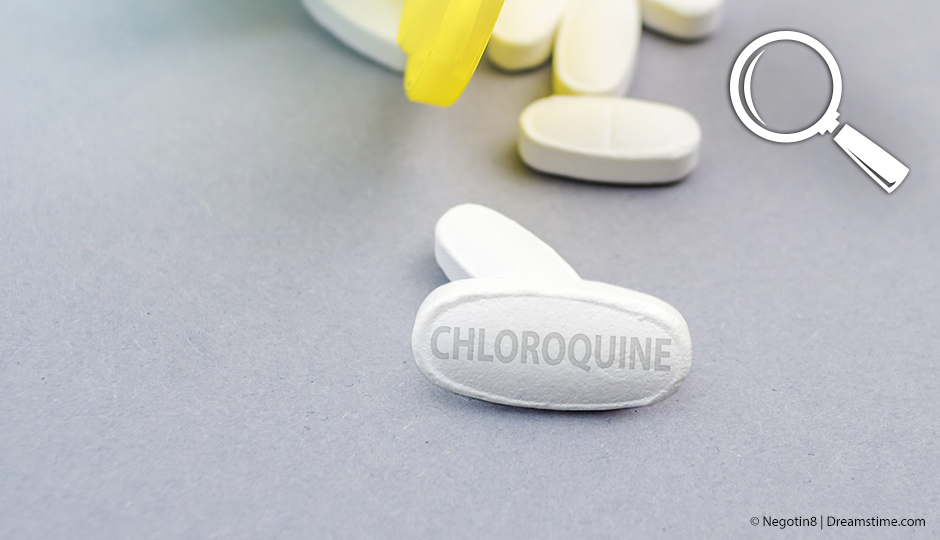Auteur : Agence Science Presse - Rabéa Kabbaj
A hundred clinical trials of antiviral drugs are currently under way worldwide. It is hoped they will limit the effects of COVID-19. Two of these drugs have made headlines more than all the others: hydroxychloroquine and chloroquine. The Rumour Detector investigates the state of the research.
The two drugs are synthetic quinine derivatives. They have been known for decades to be effective against malaria.
Interest was revised in mid-February when Chinese researchers suggested these molecules had antiviral activity in vitro against SARS-CoV-2. They became famous in France due to the work of infectiologist Didier Raoult and his team. The French researchers concluded that hydroxychloroquine associated with azithromycin was effective when given to patients during the first days of the disease. Other scientists strongly criticized this study for its methodological weaknesses. But this didn’t prevent some people, including the President of the United States, from rushing to bet everything on these molecules.
Since then, the preliminary results of two bigger studies have cooled the enthusiasm.
The first study, conducted in Brazil, two levels of use of chloroquine – “high dose” and “low dose”. Preliminary results were published on April 24. The 81 patients had been divided into two groups. Half were supposed to receive a high dose of chloroquine (600 mg) twice a day for ten days. The other half were going to receive a lower dose (450 mg) for five days. Both groups of patients also received two antibiotics (ceftriaxone and azithromycin). After 13 days, 16 patients from the first group died. So did 6 patients from the second group. The researchers temporarily concluded that a high dose of chloroquine could be associated with a severe type of cardiac arrhythmia. They therefore stopped using this level of medication. Treatment at lower doses continues.
The second study, purchased on April 23, is even less encouraging. It is based on the largest group to have been tested to date: 368 U.S. Army veterans suffering from COVID-19. The data was analyzed as of April 11. The veterans had been divided into three groups. The first received only hydroxychloroquine. The second was treated with hydroxychloroquine combined with azithromycin. The third group, a control group, took no hydroxychloroquine. The fatality rate was lowest (11.4%) in the last group, with no hydroxychloroquine. The fatality rate for the group who received hydroxychloroquine and azithromycin was nearly double (22.1%). It was even higher (27.8%) for the group receiving only hydroxychloroquine.
The researchers recognize that these figures are still preliminary. Other clinical trials are in progress.
In a pre-print paper published on May 1, Chinese researchers retrospectively studied the records of 568 patients hospitalized in critical condition between February and April. The vast majority (520) were treated with “antiviral medications and antibiotics”. A small group (48) also received hydroxychloroquine. The fatality rate in this small group was 19% (9 patients out of 48), compared to 46% in the other group (238 out of 520). If hydroxychloroquine gets the credit for this encouraging result, it should be concluded that it acts together with other drugs.
Finally, an American study appeared on May 7 in the New England Journal of Medicine. Hydroxychloroquine was used on more than 1300 patients in New York, but without a control group. It didn’t reduce the number of patients who had to be sent to intensive care. It also didn’t reduce the number of days of hospitalization.
Warnings by the health authorities
This March in Québec, the Ministère de la Santé et des Services sociaux (MSSS) asked for a “position” on the potential use of these two drugs against COVID-19. This mandate was given to the Institut national d'excellence en santé et services sociaux (INESSS). An INESSS committee of 40 experts reviewed the scientific literature as of March 31, 2020. This was before the Brazilian and American results. The committee concluded that the evidence gathered wasn’t “robust” enough to justify the generalized use of these drugs.
The INESSS therefore cannot recommend their use “outside of a research protocol” – not as a prophylactic, and not for patients with a confirmed diagnosis of COVID-19, whether hospitalized or not.
Other national health agencies have also taken their distance. On April 22, the Spanish Agency of Medicines and Medical Devices (AEMPS) reminded the public that hydroxychloroquine and chloroquine had not been proven effective yet. It was followed on April 24 by the U.S. Food and Drug Administration (FDA) and on April 25 by Health Canada. According to these agencies there are very real risks of side effects. They warn that these drugs cannot be used outside the strictly supervised contexts of hospitalization or clinical trials.
Pharmacies in the United States have been submerged with requests for these two drugs. Prescriptions have multiplied by a factor of 46 since President Trump started promoting them, according to a New York Times analysis.





